Diploma 2016 - "The terminal archive" by Karl Emil Sødergren
A search for spatial opportunities within the archive of Gustav Helland
This project was awarded with a Distinction for outstanding quality by the diploma assessors
Project description:
Gustav Helland (1887-1958) is one of the architects who has formed Stavanger the most. The many drawings, notes and sketches produced through his career in the city, from 1914 until his death, make the framework of this project. Archives, and the relevance of history, the life of buildings and its users, become important components when we relate to existing architecture.
The proposal consists of a series of actions in the existing train station of Stavanger, finished in 1963. The train station, being the last major project Gustav Helland realized, faces a life horizon of ten years before its possible replacement. The approach to the existing building chosen, is to use the prospect of demolition as an opportunity to investigate in a spatial strategy of subtraction, and at the same time insert new meaning to the building. These subtractions work as agents to give room for archival spaces dedicated to the material left by Gustav Helland, and to raise an awareness towards the behaviour of the many buildings we take for granted in the city.
Extract from the jury’s feedback:
Karl Emil’s proposal is utterly valuable for the field of Norwegian architecture as it reflects on the preservation and exposure of the legacy of Gustav Helland – an architect that has, through his lifetime practice, helped to form and advance the city of Stavanger, following its development into an important industrial city. What has remained to us from Helland’s creative craft is a volume of drawings. Karl Emil’s proposal offers a clever way to exhibit Helland’s legacy and therefore the whole history of Stavanger to future generations in one of Helland’s last buildings, in the Stavanger railway station.
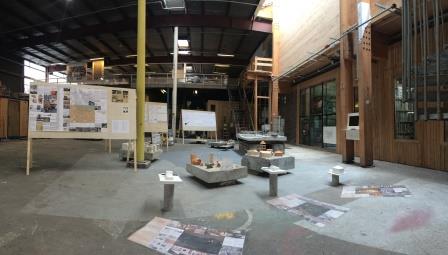
The exhibition is located in the hall at BAS. The space for the exhibition was chosen to refer the flux of the hall to the use and dimentions of the terminal building at the railway station of Stavanger.

Train station:
The project places an architectural archive inside the structure of an existing train station by subtracting building elements, adding and moving programs. The terminal becomes in itself an archival expression as it turns into a public scene of physical interventions. Over the next 10 years the train station dissappears gradually leaving parts of the original structure, or nothing. The actions will be recorded and included in the archive.
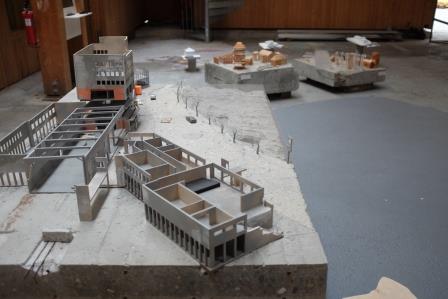
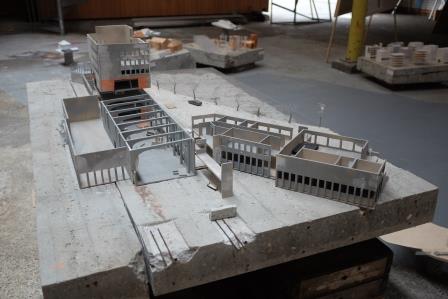
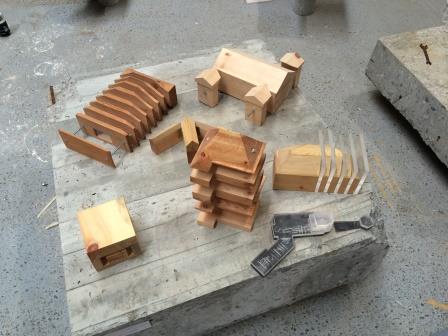
Spatial consepts:
The relations between the exisiting buildings designed by Gustav Helland in the city of Stavanger, the drawings in the archive – and the spatial speculation for future change and understanding of the buildings – are tried manifested in a series of conseptual models.

Archival concepts:
The investigation in the universe of archives resulted in a collection of archival models, referring to the idea of exposing archival material as well as keeping the material safe from the ravage of time.

Terminal hall:
The main public hall of the Stavanger railway station will according to the proposal turn into a scene of exhibited buidling parts from the surrounding complex. The hall is connected to the neighbouring building housing an archive reception, a gallery and a museum floor through a portal in the brick wall.
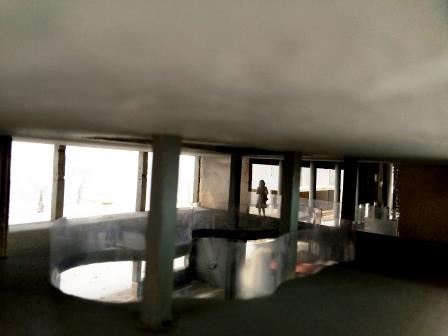
Museum floor:
The second floor of the administration building of the railway station, works as a museum floor. The new openings between the buildings, in the facades and the floors, give room for new energy as well as being a move towards a dissection of the building.
.jpg)
The exposed archive:
«More dangerous than fire, theft or the breaking down of time, is to be forgotten», has been an underlying acknowledge in the process of working with the archive of Gustav Helland. The most visually communicative content, is therefore exposed between glass panels in the former tourist pavillion located at the north end at the train station of Stavanger.
